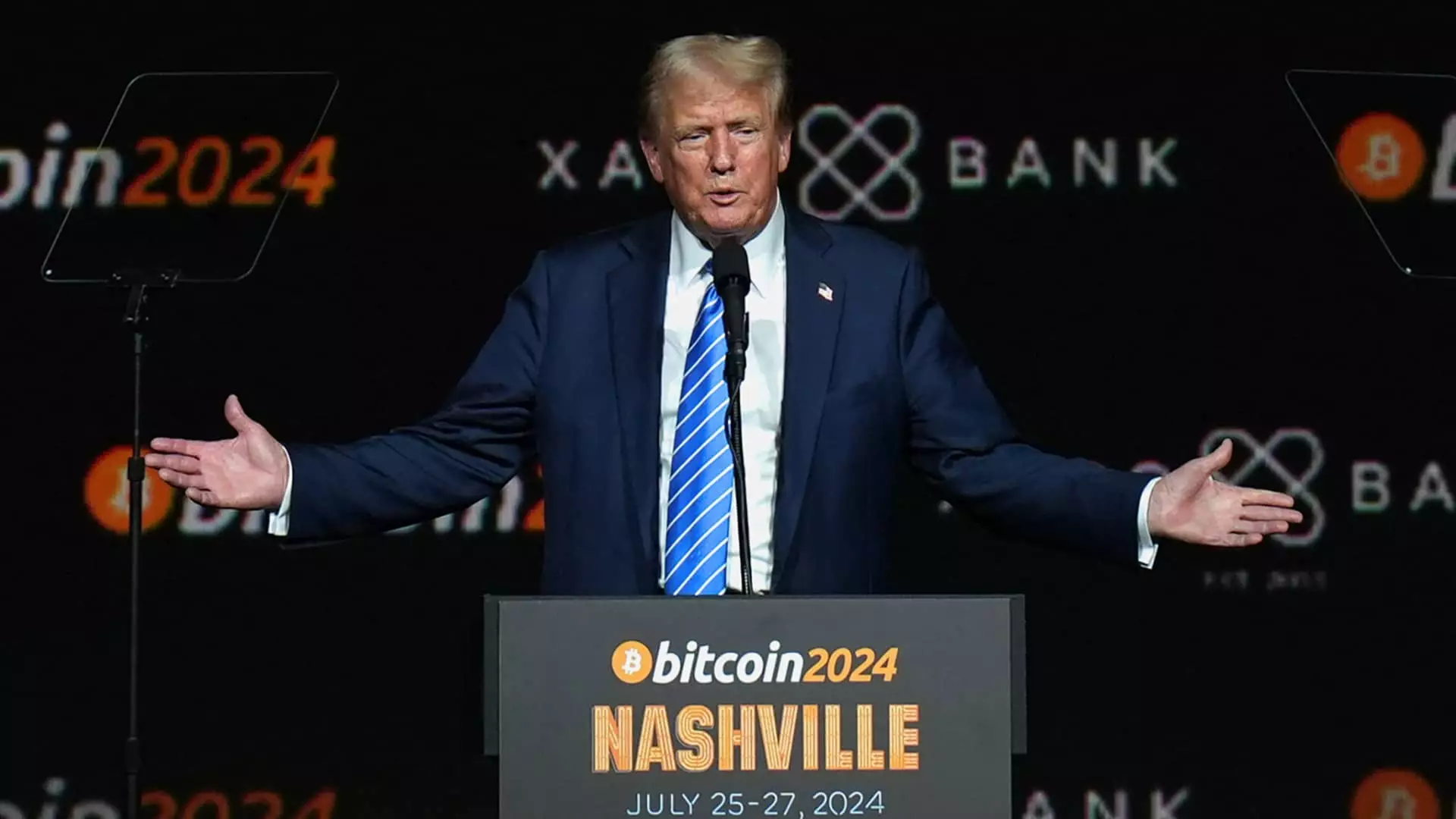The world of cryptocurrency has seen numerous entrants and ambitious projects, but few have generated as much buzz in the political landscape as Donald Trump’s World Liberty Financial (WLF). With its recently published “World Liberty Gold Paper,” WLF outlines its vision and token allocation strategies. A blend of political connotation and financial innovation, this initiative raises questions about ethical governance, accountability, and potential conflicts of interest, especially concerning the disproportionate financial gains anticipated by the Trump family.
The Financial Framework Behind WLF
At the heart of WLF’s proposition is a startling revelation: approximately 75% of net revenue appears earmarked for Trump and his family. To put this into perspective, the Trump family is projected to receive around 22.5 billion tokens, valued at a whopping $337.5 million at the initial launch price. This astonishing figure positions the Trump family as significant beneficiaries in a venture that ostensibly bills itself as a decentralized finance (DeFi) project. Publicly, this initiative is touted as politically neutral; however, the sheer scale of financial reward raises eyebrows and invites skepticism regarding its purported independence from political campaign affiliations.
WLF’s approach mimics many conventional crypto launches, emphasizing a roadmap and strategic financial targets—aiming to generate approximately $300 million at a valuation of $1.5 billion in initial sales. However, as of the latest reports, this goal has yet to materialize, with only $12.9 million sold. Such figures highlight a potential disconnect between initial ambitions and market reality. Furthermore, the document reveals that revenue is not solely derived from token sales; additional income sources include platform use fees and advertising, creating an opaque revenue model that lacks clear oversight.
What is particularly striking about WLF’s model is its design to shield the Trump family from any sequential liabilities, which could set concerning precedents in the realm of political finance. The document explicitly states that none of the Trump family members hold operational roles in WLF, suggesting a deliberate buffer between the family’s finances and the company’s performance. This legal distancing raises critical questions regarding accountability and governance. If the project were to face scrutiny or financial difficulties, can we genuinely rely on the assertion that the Trumps bear no responsibility?
Moreover, the financial beneficiaries associated with WLF appear loaded with individuals from Trump’s inner circle, creating a familial network that could blur ethical boundaries. For instance, Axiom Management Group (AMG)—set to capture 25% of net revenues—is fully owned by Chase Herro and Zachary Folkman, both of whom have tumultuous cryptocurrency backgrounds. Such ties arguably jeopardize the project’s legitimacy as users and investors are left to discern the layers of influence and potential self-dealing within the operational structure.
Given the complexity surrounding the distribution framework, the document divides total token allocation into various buckets, such as community growth, team incentives, and support efforts. However, the fine print indicating that distributions are liable to change adds a troubling layer of uncertainty. Investors watching these developments must grapple with the implications of potential shuffles among token allocations, especially considering the opaque nature of which allotment categories directly pertain to the Trump family.
Furthermore, the revelation that AMG intends to share hedge rights to revenues with entities closely tied to Trump’s political circle only compounds the concerns surrounding conflict of interest. By placing these financial mechanisms alongside political affiliations, the integrity of WLF’s objective is called into question, creating a sense of unease for prospective investors who may find themselves entangled in a politically charged financial venture.
As the cryptocurrency landscape continues to evolve, projects such as WLF stand at a crossroads, merging political aspirations with ambitious financial undertakings. While the initiative claims independence from political endeavors, its substantial ties to the Trump family’s financial interest warrant careful scrutiny.
Investors and stakeholders alike must navigate this complex web of token allocations, operational governance, and ethical considerations. The challenge lies in untangling these complicated associations while determining whether the opportunity presented by WLF justifies the potential risks involved. As with any cryptocurrency project, a measure of due diligence, transparency, and a critical approach to governance will be essential in assessing the viability and legitimacy of this intriguing yet multifaceted venture.


Leave a Reply
You must be logged in to post a comment.